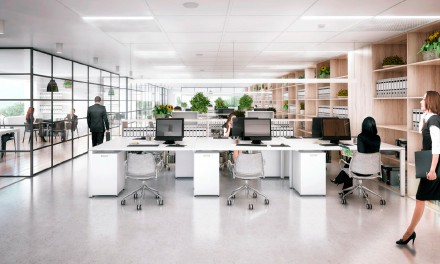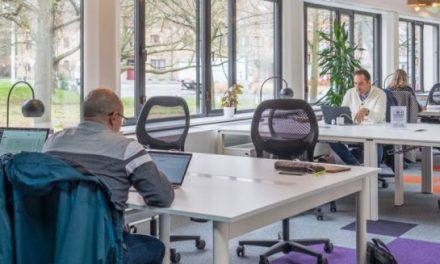Coworking spaces emphasize mental and physical health and are frontrunners in redefining what productivity and efficiency mean in the modern workforce. This new work-life landscape can revolutionize modern culture and change how companies of all shapes and sizes operate on a daily basis.
With wellness at the helm, coworking spaces are slowly turning into a movement, not just a spatial solution. This movement is vital in addressing the concerns of work-life harmony and is a solid step to bettering our understanding of balance and holistic well-being.
Let’s take a look at the world of wellness-focused coworking, and some strategies to make it worth your while.
The Evolution: From Conventional Towards Holistic Wellness
Coworking spaces are known for being well-rounded and comprehensive. And apart from being much better for mental health, they also provide better results when compared to the age-old cubicle-strewn experience of a traditional office space — improving both productivity and efficiency as well as employee satisfaction at the same time.
Adopting wellness practices serves a dual purpose by enhancing well-being while also being essential in managing workloads, especially under high-pressure situations. Coworking spaces have become pioneers in championing the idea of a balanced work-life structure, integrating a vast list of benefits and amenities for a more enjoyable experience during working hours.

Tangible Strategies to Establish a Wellness-Focused Coworking Space
While wellness is certainly a broad term, it’s best to focus on the pillars of both mental and physical wellness. By applying them through these strategies, your space will benefit immensely:
Freedom Before Anything
One aspect of wellness-based coworking is allowing employees to control their workspace. The ability for individuals to customize and tailor their specific environment is essential in modern coworking spaces, as it lets people feel at home. This, plus the ability to talk, take breaks, and mingle with like-minded individuals is what really makes this form of work fruitful.
Emphasize the Wellness Aspect of Coworking
Perhaps the best way to achieve a wellness-focused atmosphere is to create wellness-focused content. But before focusing on the aesthetics, make sure the content is easily accessible and doesn’t require tech-savviness to access.
When creating an employee wellness manual or initiatives, make sure you have your IT team build an integrated document viewer so everyone can just visit the company website and get all the manuals they need without downloading anything or wasting time
The details matter; customization is crucial in reducing stress, but it also brings about benefits in terms of efficiency and productivity. Curating the workspace’s design plays a massive role in increasing overall productivity and the well-being of the community.
Watch Your Posture
Utilizing ergonomically designed and adjustable chairs and desks, workers can reduce physical strain and the risk of musculoskeletal disorders directly and immediately. A healthy employee, unbothered by fatigue or back pain, can be more efficient and effective and, most importantly, will have a better quality of life.
Emphasize Exposure to Light
Exposure to natural light and views of the outdoors are not merely aesthetically pleasing but also contribute to reduced eye strain and enhanced mood. Numerous studies advocate for the benefits of natural light, from increased productivity and focus to better sleep and attendance at work.
With that in mind, coworking spaces can utilize natural sunlight to its fullest potential, understanding its impact on circadian rhythms and overall mood enhancement. However, this requires planning, renting the right space, and utilizing it accordingly.
Keep It Natural
Moreover, plants and natural materials within the office uplift the workspace ambiance and improve indoor air quality, contributing to better respiratory health and overall mental well-being. Connecting this coworking space with nature and having live plants in your working space creates immense benefits, many backed by science.
Capitalize on Opportunities for Movement
Physical health is equally essential to the coworking space community as a top priority. Wellness-based spaces promote a culture of movement and freedom by providing opportunities for physical activity within these workspaces. This can be achieved through thoughtful design, such as incorporating standing desks, walking paths, and areas designated for stretching or relaxation.

Practical Applications in Coworking Spaces
The ultimate goal of integrating wellness strategies and systems into a coworking space is to improve efficiency and productivity while simultaneously increasing employee satisfaction.
But don’t lean on written content too much—harness the power of sound, images, and videos to get through to your colleagues and convey the messages more effectively. You can even hire mental health experts to chime in.
This will also provide a level of accessibility that ensures that all members have the necessary information at their disposal, fostering a culture of wellness that is both effective and inclusive.
Moreover, coworking spaces have become platforms for wellness education. Hosting workshops and seminars on stress management, nutrition, proper exercise, or simply teaching members how to keep a stress journal goes a long way in engaging members of the community while also ensuring tangible benefits for them.
Embracing Cutting-Edge Solutions
On top of all of this, we shouldn’t forget that coworking isn’t a static space (pun intended)—even though a holistic approach to the workspace is quite new, it pairs well with today’s most significant trends.
To use the most obvious example, artificial intelligence is rapidly changing coworking—the global AI market is expected to be worth $15.7 trillion by 2030, but it’s already taking the business world by storm. AI-driven tools can be employed to conduct wellness surveys, automate the distribution of mental health resources, and analyze employee data to tailor wellness initiatives more effectively.
This data-driven approach ensures that wellness initiatives are well-intentioned and specifically catered to the workforce’s unique needs.
Likewise, coworking spaces might become fully virtual, as high-fidelity VR worlds become publicly accessible in the next couple of years. And no, we’re not talking about Mark Zuckerberg’s vision of floating torsos looking at presentations. Instead, think bigger—imagine having a Slack huddle in a jungle or at the base of the Pyramids of Giza.
Wrapping Up
The emergence of wellness-focused coworking spaces is redefining the concept of work environments by prioritizing physical and mental health within the workspace. This holistic approach to productivity is crucial in today’s fast-paced and often stressful work life.
As we look to the future, coworking spaces are poised to set new workplace design and culture standards, which will begin to set precedence and emphasize the importance of a balanced, healthy, and engaged workforce. Adopting these strategies is essential for sustainability and success in today’s fast-paced, technology-centric world.









